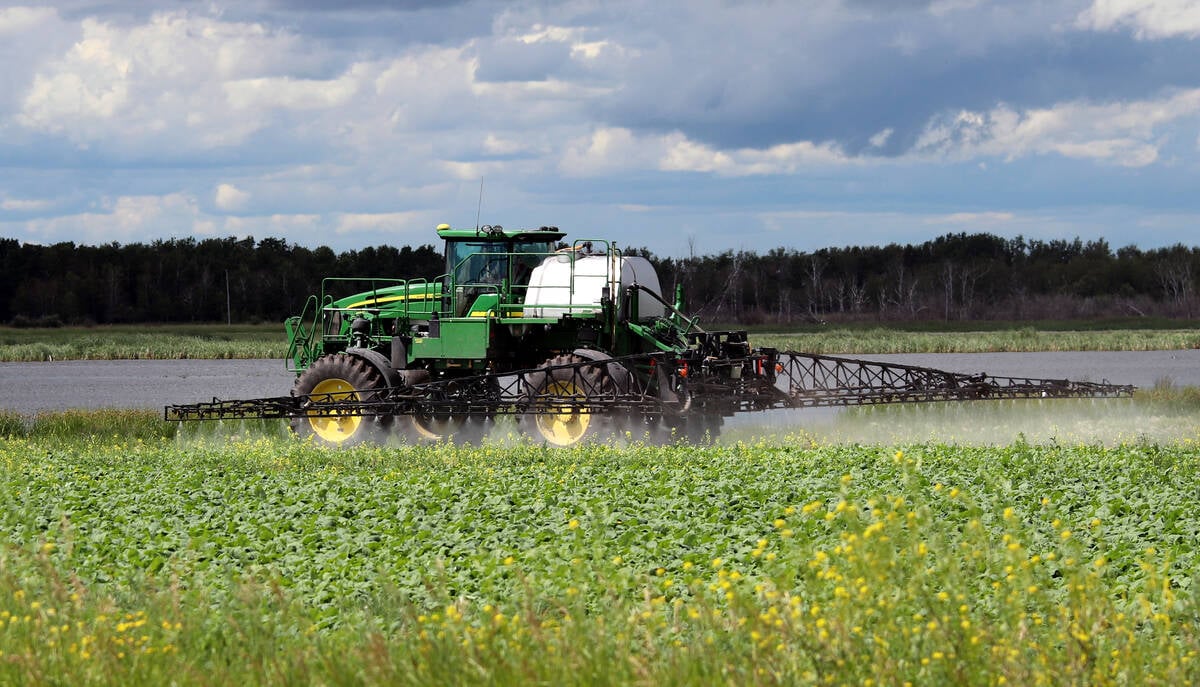Not all pulse crops are created equal when it comes to greenhouse gas emissions and nitrogen fertilizer management, says University of Saskatchewan soil scientist Richard Farrell.
“Pulses, in the year you are growing them, you’re not putting on fertilizer or you might give them some starter nitrogen but you’re not going to put on a tonne of nitrogen because they’re going to fix their own,” he says.
“Emissions during the year they’re grown would be much lower than say a cereal crop or an oilseed crop.”
Read Also

Protect your grain quality before you harvest
Information on how Canadian farmers can avoid penalties and market headaches by following labels and talking to their grain buyers.
But what about post harvest, and in particular during thaw the next spring? Farrell says crop residues and soil get saturated as the winter snow melts, providing a nice, wet, low-oxygen environment with plentiful nitrogen and carbon from crop residues. It’s a feast for soil microbes.
“Typically there’s the one big thaw event come spring, and during that period, the conditions for denitrification are almost perfect. The conditions are right, and you get a big nitrous oxide emission event at spring thaw,” Ferrell says.
“What we’ve seen over the years is that you can get anywhere from 20 to 30 percent to as much as 80 percent of the year’s entire emissions during that spring thaw event.”
Farrell is a researcher at the U of S specializing in environmental agronomy, or how agronomic systems interact with the environment. His chief area of interest is greenhouse gases such as nitrous oxide, nitrogen losses and how these are affected by farming practices.
Last year, he and his team published the results of a four-year study looking at four pulse crops: fababeans, peas, lentils and chickpeas, rotated with wheat, at a test site outside Saskatoon. The researchers used special chambers to capture and measure the gases coming off the fields during the growing season and as crop residues decomposed both above and below ground.
The impetus for the work was twofold. First, Farrel says the Intergovernmental Panel on Climate Change treats all nitrogen from farm fields the same, whether it be manure, urea or crop residues. Second, although not all field emissions are greenhouse gases, nitrogen loss in general represents evaporating dollars to the farmer.
“It still means they’re losses. That is nitrogen that you’ve paid for but aren’t getting to use,” he says .
“So nitrous oxide sort of gives you a little indicator there. If your emissions are low, then the system’s probably pretty tight in terms of using nitrogen. You’re not losing as much.”
What makes pulses valuable in enriching soil for subsequent crops is their inefficiency. For instance, Farrell says that while fababeans fix most of the nitrogen they need, much of it leaves the field with the seed.
Peas, on the other hand, are fairly inefficient, making more than enough nitrogen compounds to support their own growth with a fair bit left over in the soil and above-ground crop residue.
The speed at which these residues break down was a key question for Farrell and his team because this dictates how much nitrogen and carbon is available in the soil and when.
“It was assumed that all residues were the same, so whether it was peas, lentils, wheat or canola or fababean or anything else, they were all considered to be the same thing,” he says.
The study showed this not to be the case. In terms of nitrous oxide emissions, lentils followed by chickpeas were the worst offenders of the pulses, second only to wheat. Peas and fababeans emitted the least nitrous oxide.
“We’d see high emissions for lentils, much higher than for peas. Lentils in some years was comparable to what you would see with wheat, and sometimes even a little bit higher. So it’s really that they put a lot of nitrogen into the soil, and their residues break down rapidly.”
Lest lentils get a bad rap, Farrell says canola produces higher residue emissions than peas or wheat because compounds in the oilseed called glucosinalates prevent soil microbes from converting harmful nitrous oxide into benign nitrogen gas.
The type of knowledge from this study on nitrous oxide emissions is becoming more important. Farmers face pressure to reduce fertilizer use both from government regulation and from soaring input prices. The federal government, for example, has called for a 30 percent reduction in fertilizer use from 2020 levels by 2030.
Farrel says there is little information on the composition of crop residues and how they decompose both above and below the surface. It is something he and his colleagues hope to help remedy with further research and ultimately help farmers adapt to demands from the markets, regulators and society.
“No one is going to adopt these practices if it costs them money and there is no return on it,” Farrell says.
“We don’t pay farmers to save the environment. They are being paid for a product: their crop.”

















